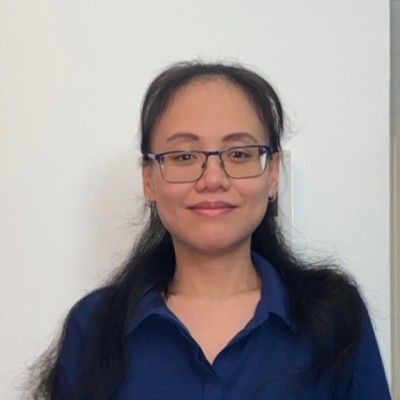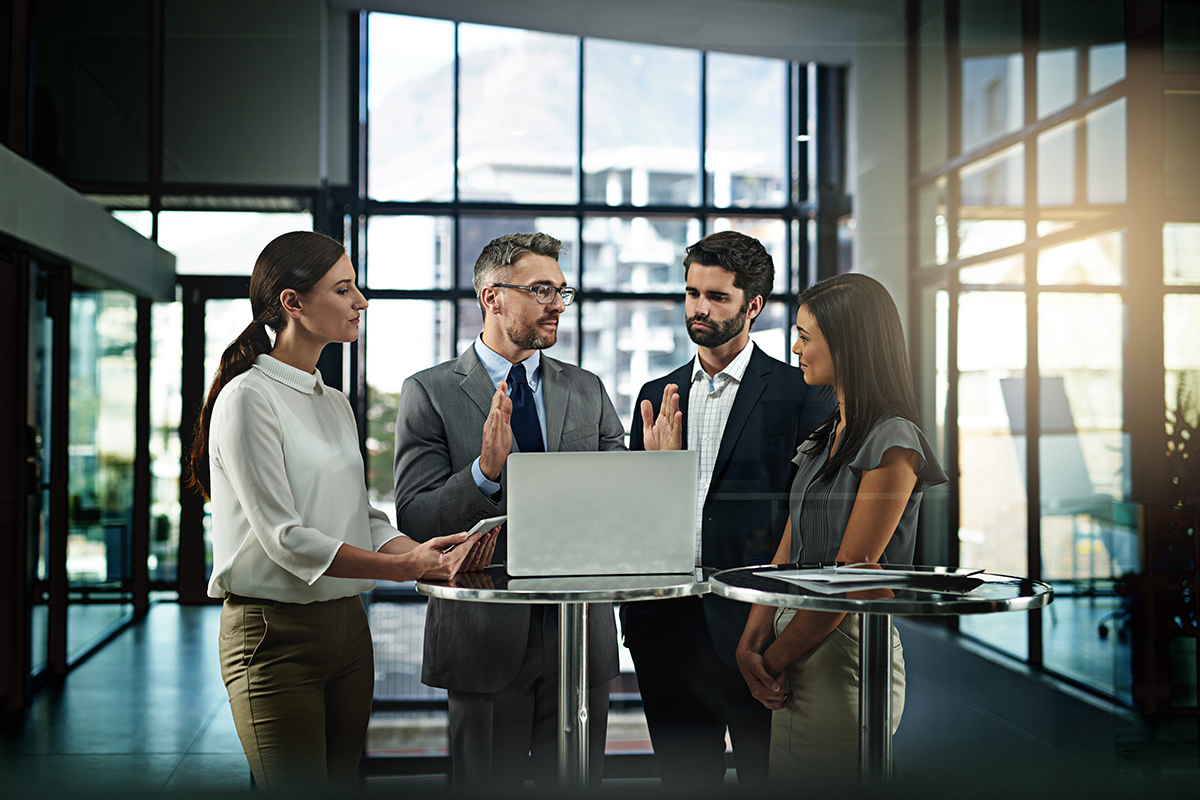A conference is a formal gathering of members of a specific group or community.
It is an event where people meet to discuss issues of interest, exchange ideas, share information and resources, etc. An agenda is the backbone of any successful conference. It guides the flow of information and activities throughout the event and provides a framework in which people can successfully network and share information, including keynote speakers and attendees. Agendas are essential because they systematically list the topics and themes discussed during the event.
A well-written agenda facilitates event organization and the overall implementation of the program. It is also crucial for the smooth running of any conference, ensuring that all mandated aspects are met. To create a successful and interactive agenda, some pre-planning must be done to be prepared for any potential contingencies. There are many steps in the planning process of creating an agenda, and these steps must align for it to succeed. This article will focus on creating a successful conference agenda and what must be considered during the process.
Why is It important to Create a Conference Agenda?
An agenda is a necessary component of any formal conference. Its job is to follow predetermined guidelines and define the purpose and structure of the conference. It acts as a “map” that guides and directs participants during the meeting. It provides all information regarding the event and serves as a comprehensive guide for all participants, preventing gaps or oversights and ensuring that all aspects of the conference are reflected and accounted for in the program.
A well-written and organized agenda also allows for smoother implementation of the program by providing a framework for organizing materials and events and preventing “dead time” between sessions. Effectively written agendas are also responsible for bringing harmony and cohesion to the conference by unifying the program and facilitating coordination and collaboration between different event sections.
Conference Agenda Templates
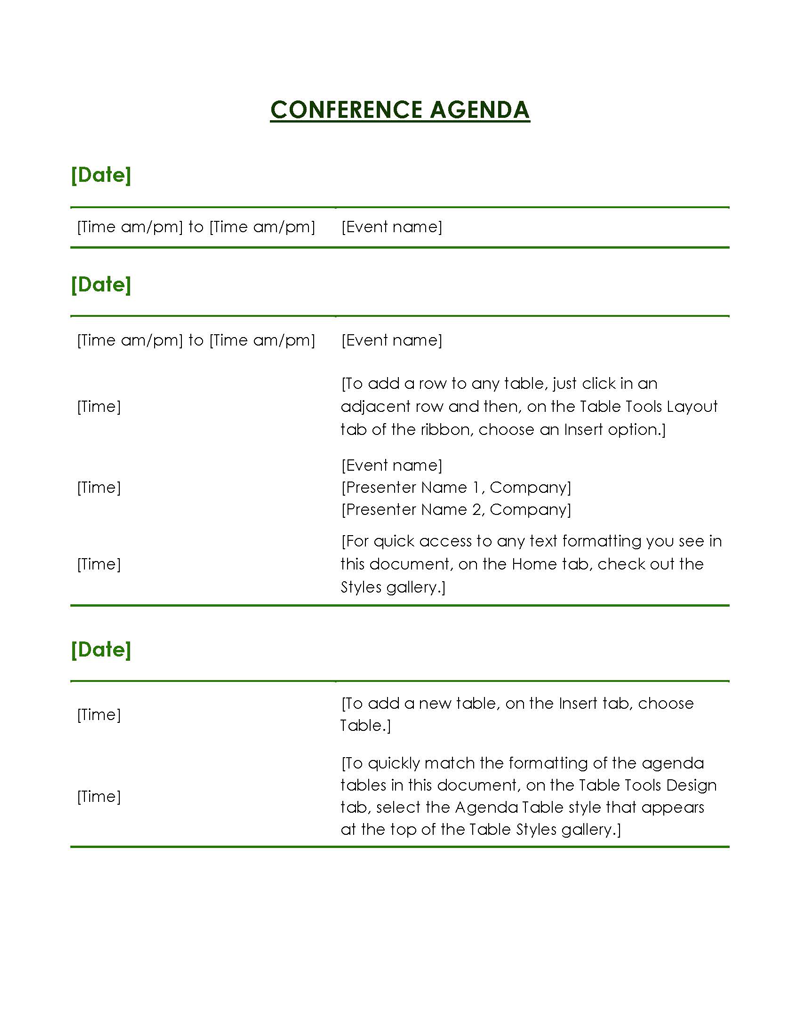


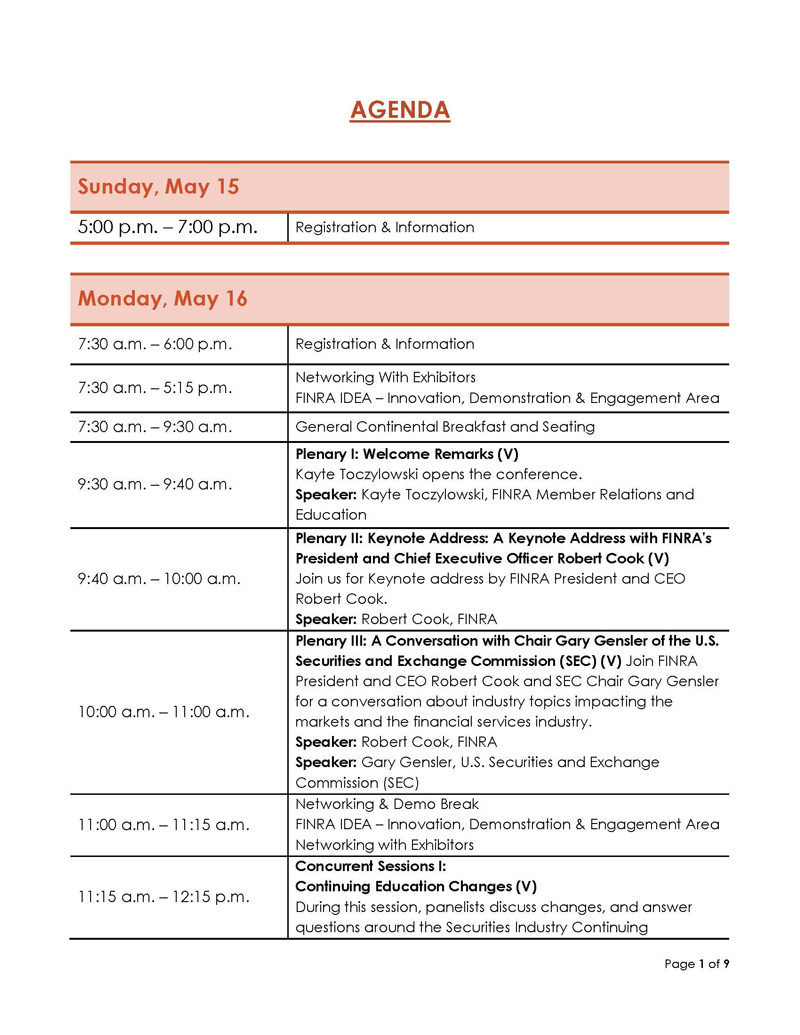
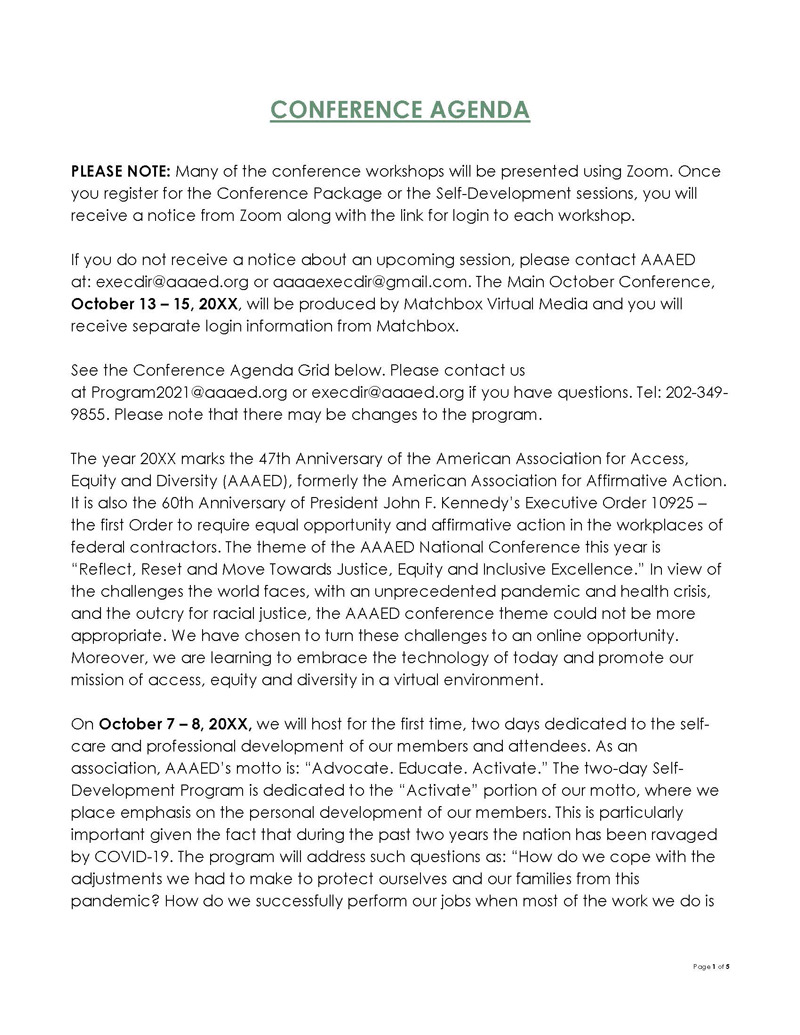
Critical Elements of a Conference Agenda
It usually comprises three key components that work together to facilitate a successful and seamless meeting experience.
These fundamental elements are:
Basic information
The essential information section is the first key element of any well-designed event. It includes vital information that every participant needs to know to prepare for the conference and plan their schedule accordingly. This section also gives the event organizers and participants a brief overview of what is expected there. It usually includes important information, such as the location, date of the event, time and sequence of sessions, and the time allotted for each agenda item/session.
Additionally, it outlines any other item(s) that can be discussed at the end of the meeting (AOB), any other relevant designations (e.g., special sessions, registrants), names of expected participants, etc.
Topic and the designated person’s name
The second element is the list of topics to be discussed and their respective speakers. This element is the heart of any conference. It allows for effective organization and implementation of the program by providing a detailed framework to which the other components can be anchored. It also serves as an instrument through which communication and organization of the event can be achieved through proper planning and coordination.
Objective
The third key element is the section that describes the purpose and objective of the meeting. It usually serves as a mission statement and gives participants an idea of what to expect from the event. It also facilitates organization by setting clear goals for each session and acts as a “road map” for all involved parties, facilitating scheduling, participation, etc. This part of the agenda must be written using precise language to ensure that all attendees understand the meeting’s intent.
How to Create a Conference Agenda
Creating an influential agenda is a very challenging process that may prove difficult for even the most seasoned event planners. It requires intricate knowledge of the event, significant expertise in planning and coordinating programs, and a good sense of organization and time management. Attentiveness to detail is also crucial when creating agendas to ensure that all event information is discoverable, consumable, and relevant to both the organizers and attendees.
The guidelines below will help you come up with a clear, concise, and well-organized conference agenda:
Consider logistics
Some logistical elements of the conference itself may prove challenging to account for or need to be altered during the event. Considering these variables in advance is crucial to preventing difficulties during the execution stage. You will want to develop a timeline for your agenda by considering the different logistics involved and allotting sufficient time for each agenda item.
To achieve this, consider the following questions when planning your agenda:
- How long is each session?
- Will breaks be necessary? If so, how many and when?
- Should sessions be back-to-back or with a gap between each one?
- Will meals be served during the event? If so, how and when should this happen?
- Where will the conference be held, and what are the travel logistics to and from the location?
- How will information transfer (atmospheric conditions, technology, etc.) occur between sessions?
- Is there a need for special equipment or facilities, e.g., sound system, display screen, or a projector screen? If yes, who will be coordinating the room and equipment preparation?
- Who will facilitate the program, and what time of the day will be convenient for the facilitator’s schedule and needs?
Decide a theme
Identify a theme or central idea for the event and work with the theme to develop an appropriate agenda. Conferences usually have a central objective that is usually very clear and can be used to create a shared understanding among all participants. The theme can be used as a common denominator for all agenda items to help give them coherence and allow for better organization and planning.
Conduct pre-event surveys
Gathering information beforehand provides a great deal of helpful detail and prepares you for what to expect as the event proceeds. It also allows you to choose which topics to include or exclude from the agenda, making it much easier and less stressful when conducting the meeting.
To get this information, consider running a pre-event survey with all the attendees to get their input on what they would like to discuss at the conference, what they hope to take away from the meeting, the keynote speakers they would like to hear from, and how they hope to increase their knowledge on the given topic. Through this step, you can tailor the agenda to the audience’s specific needs and ensure a more well-rounded, focused, and effective program.
Recruit speakers
Once you have determined the theme, identified a list of topics to be discussed, and pinpointed some keynote speakers, it is time to recruit the speakers. Again, it is imperative to choose speakers who are not only knowledgeable on the given topic but also passionate about it, as this will significantly influence the event’s success.
When recruiting speakers, you will want to find those who can bring new perspectives to the event, appealingly speak to the issue, and maintain their professionalism and composure on the platform even when responding to difficult questions from the participants. It is also helpful to seek out keynote speakers with experience addressing a similar topic to be more confident, relaxed, and authoritative when speaking on the subject. Since in-demand speakers can be challenging to get on board, consider contacting them as much in advance as possible to secure them for the event. Besides, craft an intriguing invitation to pique their interest and get them to sign on.
Plan interactive sessions
You will also want to create interactive sessions that allow participants to experience and discuss the topic engagingly. You can consider a panel discussion, roundtables, facilitated question and answer sessions, case studies, role plays, fireside chats, polls, simulations, product demos, networking sessions, or any other format that will allow participants to engage with the topic on a profound level and that will help them maximize their learning.
Organize the sessions by tracks
The agenda is often segmented into fresh tracks that have in common a central theme, methodology, or method of delivery. To create an agenda that is both orderly and clear, you will want to organize all the conference sessions under different topic tracks. By doing this, it will be much easier to identify the key issues to be addressed, the central theme of the topics, and the order in which these topics should be discussed. For the content of each track to make sense and serve its intended purpose, you must pace the delivery of each session so as not to overwhelm or lose participants’ attention.
Create multiple agenda views
Depending on the specific conference type and size, you will also want to create multiple agenda views to enable participants to navigate the event better and plan their days. You can organize the agenda by speaking schedule, time and space, content and topic, and use a timeline view to show each session in real-time or any other form that will enable participants to organize their schedule and decide which sessions they want to attend. Your agenda views should align with the overall conference structure and the venue.
Communicate the agenda
Communicating the agenda to all the faculty and speakers is crucial. It volunteers before the event to facilitate sessions and ensure that each program component is integrated seamlessly. In addition, be sure to communicate any essential deadlines and changes to panelists and speakers, discuss commitments and compensation, communicate any technical requirements, and ensure that everyone knows the program requirements, timing, logistics, and distribution.
Asking for all presentation materials in advance, organizing bio and headshot submissions, and reviewing and confirming presentation outlines are also crucial to ensuring that all sessions are delivered on time and to the specifications required.
Give attendees the ability to attach sessions to their calendar
Ensure that all participants can add the sessions and keynotes to their calendars so they will know what sessions they have signed up for and when they will be taking place. You can do this by emailing participants a calendar invite or letting them download the conference app before the event. By allowing the attendees to view and add sessions, you will allow for a more intuitive experience.
An excellent way to measure the success of your event is by examining attendee feedback and measuring key metrics such as attendee satisfaction, session attendance, and networking activity. This will help you determine any issues with the agenda, identify areas for improvement for future programs, and collect data you can share with relevant stakeholders, such as sponsors and senior leadership, to showcase the event’s ROI. Demonstrating the success of your conference will also help you gain sponsorship for future events.
Best Practices
To create a compelling and successful conference agenda, you will need to consider some best practices that support the process of creating and implementing a sound and interactive agenda.
They include:
Stick to your time boxes
The key to creating a sound event agenda is to stick to the outlined time boxes. time boxes are pre-planned, time-stamped, and sequenced segments of an event. They help the audience manage their time properly by letting them know how much time they will spend in each session and the session’s sequence of events. They also allow you to gauge how long the sessions will last and adjust where necessary to avoid running over schedule.
Facilitate attendee engagement in the agenda
To ensure that your attendees take a proactive and active part in your conference, you must facilitate engagement. You can do this by providing them with the agenda well ahead of time and allowing them enough time to review it, provide feedback, and submit their presentation outlines. You should also ensure that each session can be liked and rated to allow organizers to gather valuable information to help improve the program at future events.
Allow attendees to take polls
Providing attendees with an opportunity to vote on the importance of different components in your conference will allow them to have a direct impact on the parameters of each session. They will also be able to provide valuable feedback that can help improve future events. This will also encourage overall interaction and discussion among participants, which, in turn, improves the overall engagement level and facilitates learning. Real-time analysis of current event sessions is also a great way to help event managers make critical decisions regarding the remaining agenda, including making necessary adjustments.
Designate a note-taker
At the beginning of the conference, designate a note taker who will take down important points and participants’ comments. This will help you extrapolate valuable lessons and information from each session. It will also enable you to provide feedback and incorporate such insights into subsequent sessions and other events.
Offer exposure to sponsors
By offering sponsors attractive exposure, you can help them promote their products while you market your event. This is a creative way to attract top-tier sponsors who will be eager to participate in future events.
Make the agenda social media friendly
Try to incorporate social media into the design of your agenda. Facebook, Twitter, and LinkedIn are some of the most popular social media platforms you can integrate. You can also include a hashtag for each event, allowing your attendees to promote and share the event using social media platforms.
Review your agenda before distributing it
Reviewing the content with colleagues, experts, and stakeholders is always a good idea. This will allow you to detect any errors or omissions and make necessary adjustments before distributing it to the audience.
Wrapping Up
Conference agendas play an essential role in the success of any event. By following best practices, you can create a solid and interactive agenda that will help keep your participants on track, improve overall engagement, and facilitate learning throughout the event. They will also help you and your colleagues manage the planning process, reduce wasted time, and maximize the impact of each session. In addition, building on the success of your event will also help you get more sponsorship and funding for future events. Consider using a template that will provide you with a solid foundation to build your event agenda.
